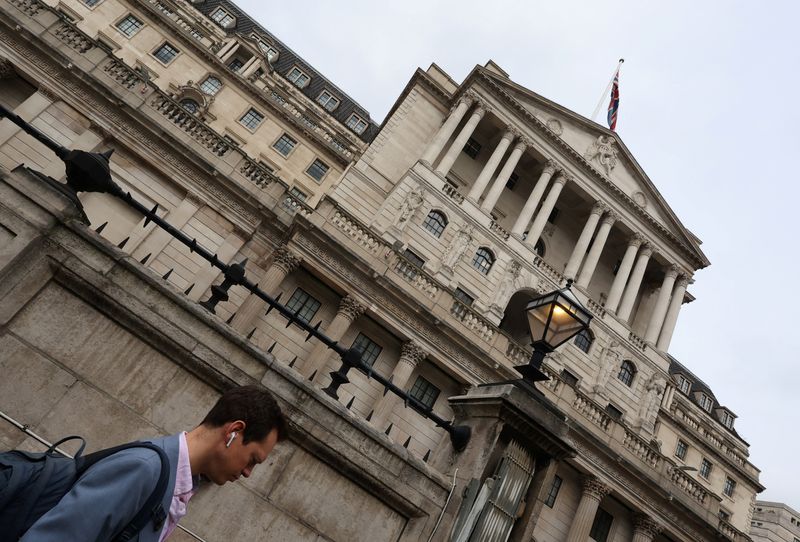By Huw Jones and David Milliken
LONDON (Reuters) - The Bank of England said on Wednesday it was taking a deeper look at risks from the opaque private equity sector, and why valuations of Britain's main banks are "subdued" compared with international peers.
The BoE's Financial Policy Committee said finance for riskier corporates could be particularly vulnerable to a deterioration in investor risk sentiment as the possibility of a sharp correction in a broad range of asset prices has increased.
"The private equity sector, which is closely related to private credit and leveraged lending, plays an important role in channelling finance to the UK real economy," the BoE's Financial Policy Committee said in a record of its March quarterly meeting.
It was difficult to assess asset valuations and leverage in the sector, making it harder to assess risks to wider financial stability, investment and employment, it said.
Private equity (PE) was finding it harder to exit investments through IPOs, with demand for additional leverage being met by banks, it added.
PE sponsored companies were turning to "amend and extend" or "payment in kind" agreements to avoid refinancing at higher interest rates, potentially storing up problems for the future, the BoE said.
"The FPC will publish a further assessment of these risks in its June 2024 Financial Stability Report," it added.
The BVCA, an industry body, said the PE sector focuses on delivering long term growth and that leverage is used when appropriate. "As we saw during the global financial crisis, the PE model is tried and tested," the BVCA said in a statement.
Britain's banking system is "well capitalised" and has "strong liquidity", giving it the capacity to keep on lending even if economic and financial conditions deteriorate, the BoE said.
BANK VALUATIONS
In the fourth quarter of last year, the major banks, such as NatWest (LON:NWG), Lloyds (LON:LLOY), HSBC (LON:HSBA) and Barclays (LON:BARC) had an overall core equity capital buffer of 14.7%, with an aggregate 3-month moving average liquidity coverage ratio of 147%, the BoE said.
However, the Bank will undertake a "desk based" stress test of lenders this year to check their resilience to shocks.
The FPC said it would maintain the countercyclical capital buffer - a rainy day reserve - for major UK banks at its "neutral" level of 2%.
Overall profitability of major banks is expected to remain robust but indicators of market value of their future profitability, such as average tangible price to book ratios, remain subdued, it said.
The FPC will publish further analysis of the ratios in June, echoing wider concerns in Europe at how valuations of banks lag those of U.S. rivals.
The Bank also flagged that financial firms and market infrastructure, such as payments, clearing and settlement system face further scrutiny of their ability to bounce back from cyber attacks and IT glitches.
It will start a cyber stress test in the spring, with the findings published in the first half of 2025.
"Resilience of individual firms might not be sufficient to ensure system-wide resilience," the committee said.

Currently, core payment systems have to show they can recover from glitches, but the committee said it would "consider whether to set impact tolerances for additional vital services beyond payments" to plug any gaps in resilience that it finds.
(This story has been refiled to attribute a statement to the Bank of England, in paragraph 9)